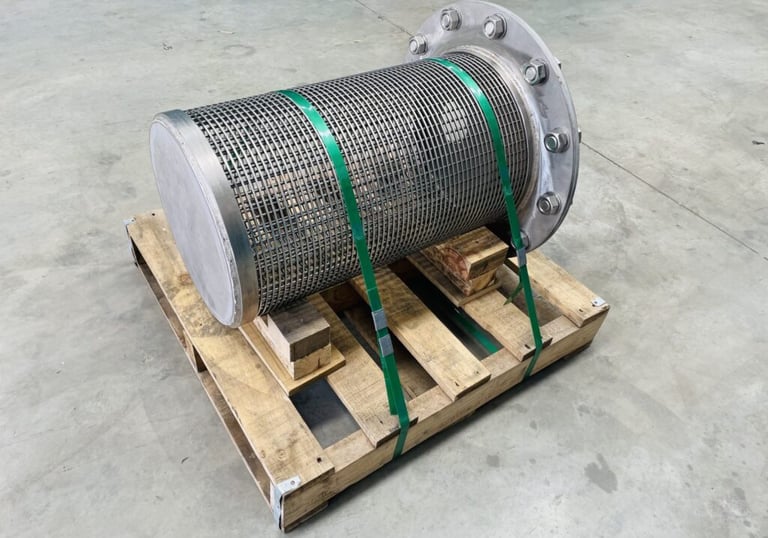Foot Valves


Foot valves are a type of check valve installed at the bottom of a pump suction line in a well, tank, or reservoir. They are designed to maintain the pump's prime by preventing the backflow of water and allowing the pump to stay filled with fluid. Here are the details and specifications for foot valves:
1. Size Range:
Commonly available in sizes from 1/2" to 24" (DN 15 to DN 600) or larger depending on the application.
2. Material Specifications:
Body Materials:
Cast Iron: Most common material for low-pressure applications.
Ductile Iron: Provides better strength than cast iron.
Bronze: Ideal for marine and saltwater environments due to its corrosion resistance.
Stainless Steel (304, 316): Used in corrosive environments and for more durable, long-lasting applications.
PVC/Plastic: Common in lightweight, low-pressure applications like irrigation or aquaculture.
Brass: Used in small applications with lower pressure ratings.
Strainer Materials:
Stainless steel or brass strainers are common for foot valves in harsh environments to prevent debris from entering the pump line.
3. Pressure Ratings:
Pressure ratings for foot valves typically range from PN10 to PN25 (150 PSI to 300 PSI), depending on the material and design.
Some heavy-duty models are rated for pressures up to 600 PSI.
4. Design and Features:
Check Valve Function: The foot valve acts as a check valve to prevent the backflow of fluid, keeping the pump line filled with liquid and maintaining the pump’s prime.
Strainer: A perforated screen or mesh at the inlet prevents debris from entering the pump, which can damage the pump or cause clogs. The mesh size can vary depending on the type of fluid and debris expected.
Disc or Poppet Design: The valve is usually equipped with a spring-loaded disc or poppet that closes when the pump shuts off, preventing reverse flow.
Self-Cleaning: Some foot valves are designed to be self-cleaning, reducing the buildup of debris on the strainer.
Corrosion Resistance: For valves in corrosive environments, materials like stainless steel or PVC are used to prevent degradation.
5. End Connections:
Threaded Ends: Available in NPT, BSPT, BSPP threads, mainly for smaller sizes (up to 2" or 3").
Flanged Ends: Available in larger sizes for higher flow applications, complying with ASME, ANSI, DIN, and other flange standards.
Socket Weld/Butt Weld: Used in specialized applications requiring welded connections.
6. Operating Temperature Range:
The temperature range depends on the material of construction:
PVC/Plastic: Usually operates between 0°C and 60°C.
Stainless Steel/Bronze: Can withstand higher temperatures, up to 200°C or more, depending on the material.
7. Applications:
Water Wells and Boreholes: Foot valves are used to maintain the prime of pumps in deep well applications.
Irrigation Systems: Commonly used in agricultural and garden irrigation systems to prevent backflow and debris entry.
Industrial Water Systems: Installed in tanks or reservoirs to ensure efficient pump operation and avoid loss of prime.
Aquaculture and Fish Farming: For maintaining water flow in tanks and preventing fish or other debris from entering the pump system.
Firefighting Systems: To maintain the flow of water in fire pump suction lines.
Marine and Offshore Applications: For seawater intake systems, where corrosion-resistant materials like bronze or stainless steel are essential.
8. Standards & Certifications:
API 598: Valve inspection and testing standards.
BS EN 12334: Standards for foot valves.
AWWA C508: For foot valves used in waterworks and municipal applications.
ANSI/ASME B16.1, B16.42: For valves with flanged connections.
9. Flow Characteristics:
Foot valves are designed to provide minimal head loss for maximum efficiency of the pump. The design ensures that the valve opens fully with the least amount of pressure drop across the valve.
10. Installation:
Foot valves are installed vertically at the suction side of the pump. They are submerged in the fluid source (well, tank, reservoir), with the strainer end facing downward to prevent debris from entering the suction line.
11. Maintenance:
Regular inspection of the foot valve and strainer is necessary to ensure it is free of debris. For plastic foot valves, periodic replacement may be required in harsher environments due to wear and tear.
Self-cleaning models may require less frequent maintenance but should still be checked periodically for optimal performance.
QUALITY
Supplying High-Quality Plates, Wire Mesh, perforated Sheets, Coils, All types of Flanges, Round Bars, Fasteners, Vales, Strainers etc.
Contact us
Request a quote
✉️ Email:
admin@mw-enterprises.com
abdulwahab.ansari@mw-enterprises.com
📞 Phone: +91 90281 70158
MW Enterprises © 2024. All rights reserved. Developed by Seofy.in
Our sales & supply are in below countries:
Saudi Arabia, Qatar, Oman, Kuwait, United Arab Emirates (UAE), Dubai, Bahrain, Italy, Indonesia, Malaysia, Jordan, Sri Lanka, Vietnam, South Africa
Abdul Wahab Ansari
MW Enterprises General Trading Company
